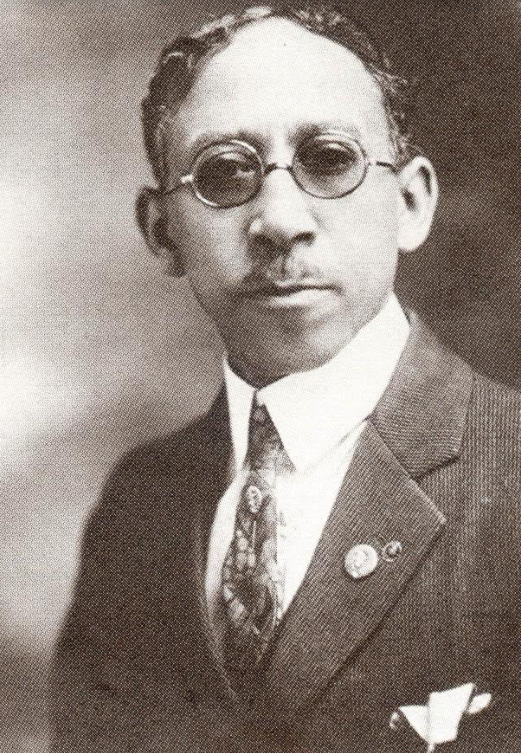
Pioneering Black Architect William Wilson Cooke
Post filed in: Civil Rights
African Americans pursuing a career in architecture have always faced high barriers to entry. The profession remains mostly white to this day. Even during periods of extreme racial discrimination, however, a small number of black architects were able to find success.
William Wilson Cooke’s career path particularly interests GSA because for two long periods he worked for the Office of the Supervising Architect of the Treasury. That office was one of GSA’s predecessors, responsible for designing and constructing federal buildings. Cooke’s experiences within the federal workforce did not reflect racial harmony—he faced discrimination from his very first day on the job. However, these two periods do provide an inspiring example, rare for the time. Cooke, a talented black architect, pivoted skillfully between federal employment and private practice to establish a successful career for himself in the face of extreme obstacles.
William Wilson Cooke was born in Greenville, South Carolina, in 1871. His father, Wilson Cooke, was a prominent local businessman, delegate to the 1868 South Carolina Constitutional Convention, and was formerly enslaved. Cooke apprenticed to a carpenter in 1885. After that, he enrolled in Claflin University, where he took an architectural drawing course—the first such course taught at a historically black college and university (HBCU)—led by the pioneering instructor Robert Charles Bates. Upon completing his course of study at Claflin in 1893, Cooke spent the next 14 years closely engaged with Black higher education in the South. He taught at Claflin and the Georgia State Industrial College for Colored Youths (now Savannah State University), and designed many buildings for both institutions as well as other HBCUs.
Cooke’s first job with the federal government began in 1907. Denied the right to take a civil service examination in the District of Columbia because of his race, he completed the three-day exam in Boston. When he reported for duty at the Office of the Supervising Architect in Washington, Cooke’s arrival disturbed staff members who had not known he was Black.

Photo credit: Calumet Region Archives, Indiana University Northwest
Nonetheless, he received a probationary appointment as an architectural draftsman with an annual salary of $1,400. With that, he became only the second African American to serve in a professional capacity in the Supervising Architect’s office (the first, Lowell W. Baker, was appointed in 1904). Continuing to work in this position over the next two years, Cooke also executed several private commissions in Washington, DC, including a house at 1019 Kearney Street, NE, and alterations to Asbury United Methodist Church at 14th and K Streets, NW.
In 1909, Cooke transferred to field operations and was promoted to superintendent. This promotion required him to travel throughout the Midwest and evaluate the progress of federal construction projects. He had to ensure that buildings were constructed on time, on budget, and to the exact specifications of the Supervising Architect’s Office. Cooke therefore had to know all aspects of a construction project, ranging from judging materials samples and workmanship to broadly evaluating overall progress.
While Cooke could not work on his own designs, he did accumulate invaluable experience in constructing large public buildings. According to the currently available sources, Cooke worked on post offices. Some of these buildings still stand and serve their original use; others have been adapted for new uses.
While we don’t have Cooke’s personal reflections or recollections concerning this first stint of federal employment, we can’t help but wonder what role, if any, his race played as he fulfilled his duties as superintendent of federal construction.
As a Black man traveling through the American countryside during the early twentieth century, required by his very job description to judge the work of local and regional contractor teams, Cooke may very well have encountered some tense job sites. Internal support from the Supervising Architect’s Office may have been lacking at this time. The Wilson administration (1914-21) is known as a particularly low point for racial equity in the federal workforce. Segregationist policies erased many of the Reconstruction era’s gains.
In 1918, Cooke transferred to the War Department. From a training center at Wilberforce University in Ohio, he taught vocational instruction to all-Black labor battalions bound for overseas work. Cooke may very well have assumed this position proudly and voluntarily; the affiliation with a respected HBCU like Wilberforce and the dedication to uplift through vocational training are both consistent with his early life and career. Nonetheless, the segregation of the battalions he taught serves as a reminder that racism was everywhere.
In 1921, after three years with the War Department, Cooke moved to Gary, Indiana, and started a private architectural practice. The relatively new community of Gary was growing rapidly, as many immigrants and African American migrants flocked to work in the massive mills that the U.S. Steel Corporation established in 1906.
This rapid growth created problems as well as opportunities for talented architects such as Cooke. His output during this period shows a deep engagement with the African-American community; it also clearly draws on his experience working on large public buildings. For example, the Saint John Hospital (1929) provided critically needed medical facilities to African Americans denied service at the area’s all-white hospitals. He also designed two settlement houses for charitable organizations that provided a variety of services to the city’s migrant population. In 1929 Cooke was the first Black architect licensed by the State of Indiana.
Despite his accomplishments, Cooke incurred large debts during his time as an architect in Gary. After the stock market crash of 1929, Cooke was forced to abandon his practice. He returned to the Office of the Supervising Architect and resumed as superintendent. The next 13 years saw Cooke once again traveling through the Midwest, inspecting the progress of federal construction projects in Illinois, Michigan, Minnesota, Missouri, and Ohio.
He retired in 1942, proud of his time. He estimated that over the course of his career he had supervised more than $2,250,000 worth of construction work for the federal government. William Wilson Cooke died in 1949.
Many questions remain about Cooke’s life and career. We’d like to know more about Cooke’s experiences as a Black architect for the federal government at a time of extreme racial discrimination. We also know relatively little about the career of Lowell W. Baker, Cooke’s colleague and fellow Black architect at the Supervising Architect’s office. As archives reopen and more information becomes available, GSA will continue to look into these and other questions related to these pioneering Black architects.

 U.S. General Services Administration
U.S. General Services Administration
